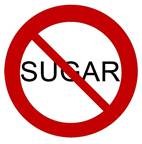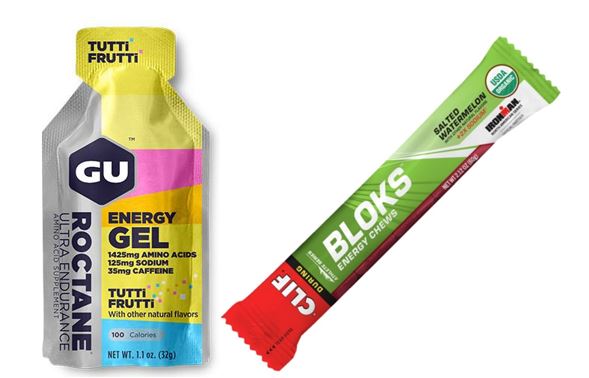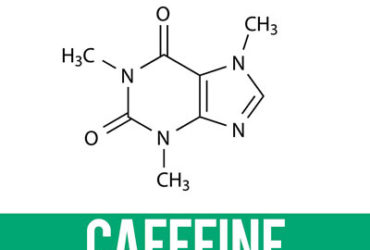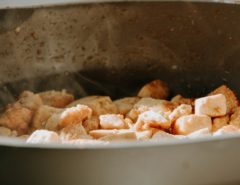BY: ALEX PIERCE- FELDMEYER
Let me tell you a story.
Mid triathlon I was pregnant. Okay, I wasn’t really but I felt like what I imagine a pregnant woman would feel like. I was bloated, wobbly and overall extremely tired. My gut felt protruded (because it was). I couldn’t run and I felt like I was carrying a massive water baby too big for my small 5’2’’ frame. At some point during my walk of shame near the end of the race, a volunteer said, “Here! Drink some soda, you are probably not refueling properly.” At this point, I felt so terrible I was willing to try anything to release the pressure and pain in my stomach – however, it was hard to imagine that soda was going to do the trick. But I wanted to actually finish the race running so I gave it a shot.
Over the next couple of minutes it became clear I had made grave nutritional mistakes during this long race, but surprisingly the soda was helping me make up for it. After researching my symptoms post-race, I realized my salt/sugar balance was off. I had drank too much water without replenishing electrolytes and critical energy stores. I needed salt to help replenish some electrolytes (for proper nerve transmission and muscle contraction) and a lot more sugar to keep my energy elevated and sustained over time. This is just one example of why having a good fueling plan during endurance events is critical, and it’s also the reason that I’m telling you refined sugar can be good for us.
YES I SAID IT: REFINED SUGAR IS GOOD.
But Alex, isn’t Sugar enemy #1?
Recently I feel like I have been hearing a repeating echo: STAY AWAY FROM PROCESSED SUGAR.

If you are a member of the camp that considers sugar’s spike in energy as bad for you, you might be thinking, “… there are no proteins, essential fats, vitamins or minerals in sugar… just pure energy. 1”
You’re right! And for that I am thankful. While refined sugar’s immediate energy burst and eminent crash are not ideal during a normal day (why candy isn’t your best friend before a work meeting), this easy energy isn’t so bad when you’re depleted and needing quick calories your body can easily digest.
Now let’s talk about why it has a place in your diet: Exercise. Ahhhhhh. Unlike sugar, here’s something we always hear good things about. Whether you do the bare minimum, or go the distance and train for long bouts of endurance tests, you’ll find simple sugars have a place in your diet. Prior to an endurance event or even a 30-minute walk, glycogen (the storage form of glucose) is stored in your muscles from a normal diet which is beneficial because your body will deplete those glycogen stores in order to create the ATP (energy!) needed to keep you moving. Once you exert yourself over 30-60 minutes, it’s likely that glucose stores naturally found in your muscles have dwindled. It turns out that simple sugars are great candidates to do restore this glycogen. This consumption is less critical for shorter, low impact workouts but as soon as the workout becomes longer or harder on the muscles, refilling glycogen stores becomes more important.
Specifically, when exertion extends past 60 minutes our body’s glycogen stores are most likely bone dry. This is why you see football players by the Gatorade stations during games, or marathon runners reaching for paper cups during a road race. Keeping your glucose stores filled is the key to going long and strong and not ‘bonking’ (bonking is what endurance athletes call extreme fatigue or low energy during a race or training session).
Let’s try not to do this:

https://www.google.com/search?q=brownlee+hitting+wall+brother&rlz=1C1CHBF_enUS780US780&source=lnms&tbm=isch&sa=X&ved=0ahUKEwiGt4Hv0N3ZAhVN3qQKHY5zDXYQ_AUIDCgD&biw=1920&bih=925
If all I need is more energy, couldn’t I eat something else besides sugar? Perhaps a roast beef sandwich or protein bars at the least?
The answer to this is maybe, but here’s the catch:
Because your heart rate is elevated and digestion is slowed or in some cases paused completely during exercise2, it would behoove you to ingest something that is not going to shock your system. In other words you don’t want to ask too much of your digestive system at this already physically stressful time. You need something that takes a shorter and easier path to energy that you can use to keep your legs kicking (and your stomach comfortable). So what can we eat for easy energy? You guessed it – simple sugars! Consuming sugar likely in the form of glucose and fructose (monosaccharides) or in another form that readily breaks down into glucose or fructose, such as sucrose, is the quickest way to obtain energy. This is one of the reasons sugar gets a bad rep, because sugar-based energy is not as sustainable as slower digesting carbohydrates (e.g. oatmeal), protein or fat. But as we learned earlier our body during exercise cannot handle that level of digestive capacity like it does when it’s at rest. The body’s energy is being diverted from digestive duties during physical activity2, so proteins and fats are not realistic options for quick energy. As a caveat there are ways to use fat for energy (and some are attempting to train their bodies to use fat exclusively with specific diets8-10) but your body needs oxygen to do this which is less available during intense exercise3.
Now that we are clear on why there is a place for simple sugars and that they are not a scary poison let’s look at some of the best ones to ingest and why.
High-sugar energy fuel for exercising
When looking at the market today, sugary sports drinks, gels, jelly beans and even waffles are all being marketed as endurance products. Their nutrition labels otherwise would make some people shudder. But that doesn’t mean they are not serving a purpose or that they do not have value. Without such products many endurance athletes would suffer excruciating consequences. Let’s take a closer look at some of these products.

The first three ingredients of a Gu energy gel are (1) maltodextrin, (2) water and (3) fructose4. The first three ingredients of Clif bloks are (1) tapioca syrup, (2) cane sugar and (3) maltodextrin5.
As you can see, both contain maltodextrin. Dextrin is made up of small chains of glucose that quickly release glucose during digestion (glucose will become very familiar to you by the end of this post). Maltodextrin is a dextrin product resulting from the breakdown of starch and is added to products for energy. Since the glucose is tied up in the maltodextrin chain, you won’t taste the product as super sweet compared to straight sucrose. And by surpassing the breakdown of starch into dextrin we have skipped a digestive step making it easier for athletes to consume and use the energy quicker than if they had consumed the starch in its undigested form. These products are all about ease of digestion and palatability during exercise.

https://www.google.com/search?rlz=1C1CHBF_enUS780US780&biw=1920&bih=925&tbm=isch&sa=1&ei=pqWhWsiVKcbgkgWDgJ_QBw&q=fructose+molecule&oq=fructose+molecule&gs_l=psy-ab.3..0i67k1j0l4j0i30k1j0i5i30k1l2j0i10i24k1j0i24k1.2228.2228.0.2864.1.1.0.0.0.0.181.181.0j1.1.0….0…1c.1.64.psy-ab..0.1.179….0.5Ps3i180m2Y#imgrc=M_8do7jfdnjh-M:
Now let’s talk about cane sugar. It’s made up of sucrose (glucose linked with fructose), glucose and fructose. Again with the glucose and fructose. Glucose and fructose are important for two main reasons: One is that they are monomers (or single units) of energy making them absorb directly into the bloodstream for even faster energy than sucrose, a disaccharide (two unit sugar) The more broken down sugar molecules are, the easier they are to digest and the less likely they are to promote abdominal cramping and discomfort, two things athletes would desire very little during a training session or a race. Another reason is that the body uses separate pathways to absorb glucose and fructose, so theoretically including both may result in more energy being made in less time. This explains why forms of glucose and fructose are ultimately the primary ingredients in endurance sports fuel products 3.
Tapioca syrup is also known as a ‘glucose syrup,’ and therefore added to provide sweetness, texture and most importantly, fast energy. As you can see many of the ingredients in these endurance products end up being the same sugars (glucose and fructose) with the same functionality…
“The body of an endurance athlete is a finely tuned engine, and glycogen—a polysaccharide stored in the muscles and liver—is its fuel. When an athlete runs low on her energy supply, what may seem like sure victory can quickly turn to frustrating defeat.6”
And at a time when scientific evidence feels less favored as diet inspiration, we do have a subculture being more influenced by clinical trial results than by emotions evoked by social media. One example is HOT SHOT.7 Hot shot is a ‘shot’ of liquid that was developed by a neuroscientist and neurobiologist8 that had a striking realization about muscle cramps. They didn’t need to treat the muscle, but instead found that treating the nerve was the answer. They then developed a liquid with capsaicin (a compound responsible for spiciness irritation or pain) to promote a nerve response, which was found to alleviate the misfiring of nerves occurring during muscle cramps. This is often given out during endurance events.
However, this is not to say that market trends have not been embraced. There are many sports fuel brands touting ‘natural’, ‘non-GMO’, and ‘whole food’ on their labels to attract consumers. However, as we have come to conclude, many of the same ingredients remain standard for endurance products. For example, let’s look at a ‘clean’ ingredient like “honey.” Two-thirds of honey is made up of glucose and fructose, the last 1/3 is water, maltose (bonded units of glucose), sucrose (fructose bonded to glucose), other carbohydrates (sugar) and minerals (0.5%)9. Or how about some swanky agave nectar that is often found in natural-touting products? Agave nectar is made up of 56% fructose and 20% glucose13.
To save us some time translating “clean” ingredients to their glucose/fructose counterparts I’ve created a cheat sheet.
| Ingredient | Primary Components |
| Sucrose | glucose + fructose |
| Honey | 66% glucose & fructose, maltose, & sucrose14 |
| Agave syrup | 56% fructose, 20% glucose13 |
| Brown rice syrup | “maltose syrup16” = 2 glucose units bonded as one |
| Dates | fructose, glucose and sucrose15 |
| Cane syrup | fructose, glucose and sucrose16 |
| Corn syrup | “glucose syrup” |
| Tapioca syrup | “glucose syrup17” |
| Isomaltulose | glucose + fructose19 |
Notice a pattern? Glucose and fructose every time. It seems like each one of these ingredients ultimately serves the same purpose: easily digestible sugar for easily accessible energy.
Conclusion
So, in conclusion, can we agree to not be too scared of sugar? While they can be harmful in some applications of over-consumption, if refined and processed versions did not exist it would be a lot harder for me or another athlete to run our next marathon. Oh how I look forward to that last final push to the finish line with my trusty training partner glucose in hand!
References
-
https://www.healthline.com/nutrition/10-disturbing-reasons-why-sugar-is-bad
-
https://www.manhattangastroenterology.com/exercise-affects-digestion/
-
https://cen.acs.org/articles/94/i6/Athletes-Look-Sports-Nutrition-Products.html
-
https://shop.guenergy.com/products/energy-gel?variant=6937119424563
-
http://www.clifbar.com/products/clif/bloks-energy-chews?gclid=CjwKCAiAlfnUBRBQEiwAWpPA6WPMDQ1G9d70lHhaYF7w0jwNCmc4owGOtUjLMgbXw9vTRNhGzi9iqhoCMOgQAvD_BwE&gclsrc=aw.ds
-
https://cen.acs.org/articles/94/i6/Athletes-Look-Sports-Nutrition-Products.html
-
http://www.teamhotshot.com/
-
http://www.teamhotshot.com/our-story/
-
http://www.chm.bris.ac.uk/webprojects2001/loveridge/
-
https://www.sciencedirect.com/science/article/pii/S1550413116303552/
-
https://jissn.biomedcentral.com/articles/10.1186/s12970-017-0180-0
-
https://www.researchgate.net/profile/Timothy_Noakes/publication/266571664_Rethinking_fat_as_a_fuel_for_endurance_exercise/links/567d3a6808aebccc4e03e6a6.pdf
-
https://www.uni-giessen.de/fbz/fb09/institute/ernaehrungswissenschaft/prof/lmw/pdf-brueckner/mass-spectrometric-detect
-
http://www.chm.bris.ac.uk/webprojects2001/loveridge/
-
https://www.sciencedirect.com/science/article/pii/S1658365514000703
-
https://www.sciencedirect.com/topics/medicine-and-dentistry/sugarcane-juice
-
http://www.briess.com/food/Assets/pdf/ss_other/Briess_WP_GlucoseCornTapiocaSyrups.pdf
-
http://www.mitoku.com/products/brownricemalt/making_ricemalt.html
-
https://books.google.com/books?id=OB1BBAAAQBAJ&pg=PA210&lpg=PA210&dq=isomaltulose+components&source=bl&ots=yhL6KK5iwD&sig=NuX0B7N53cNnvm1W5kprHfU2NxM&hl=en&sa=X&ved=0ahUKEwjNx6vlzd3ZAhXH_qQKHaP1AuYQ6AEITzAG#v=onepage&q=isomaltulose%20components&f=false






Leave a Reply